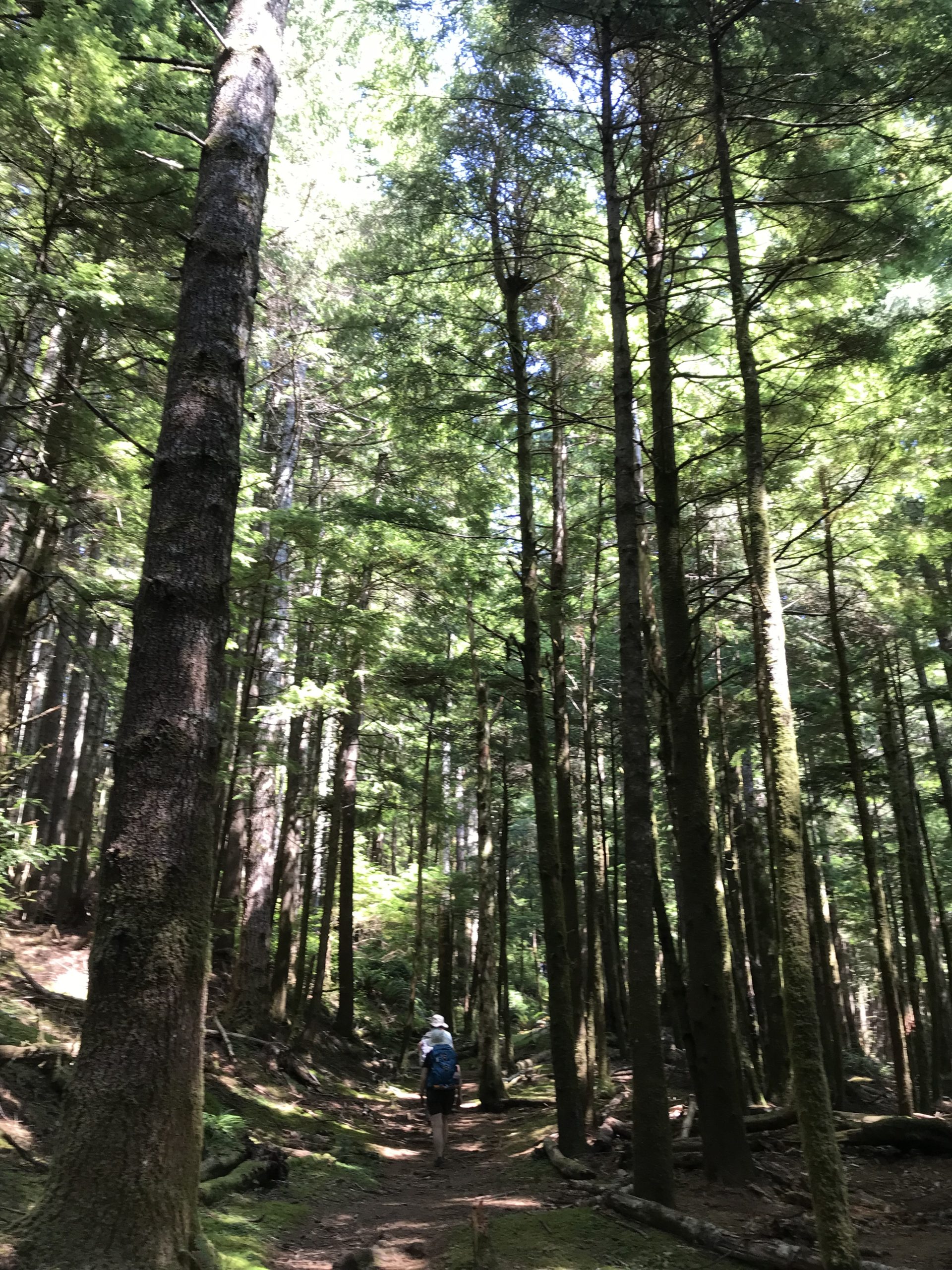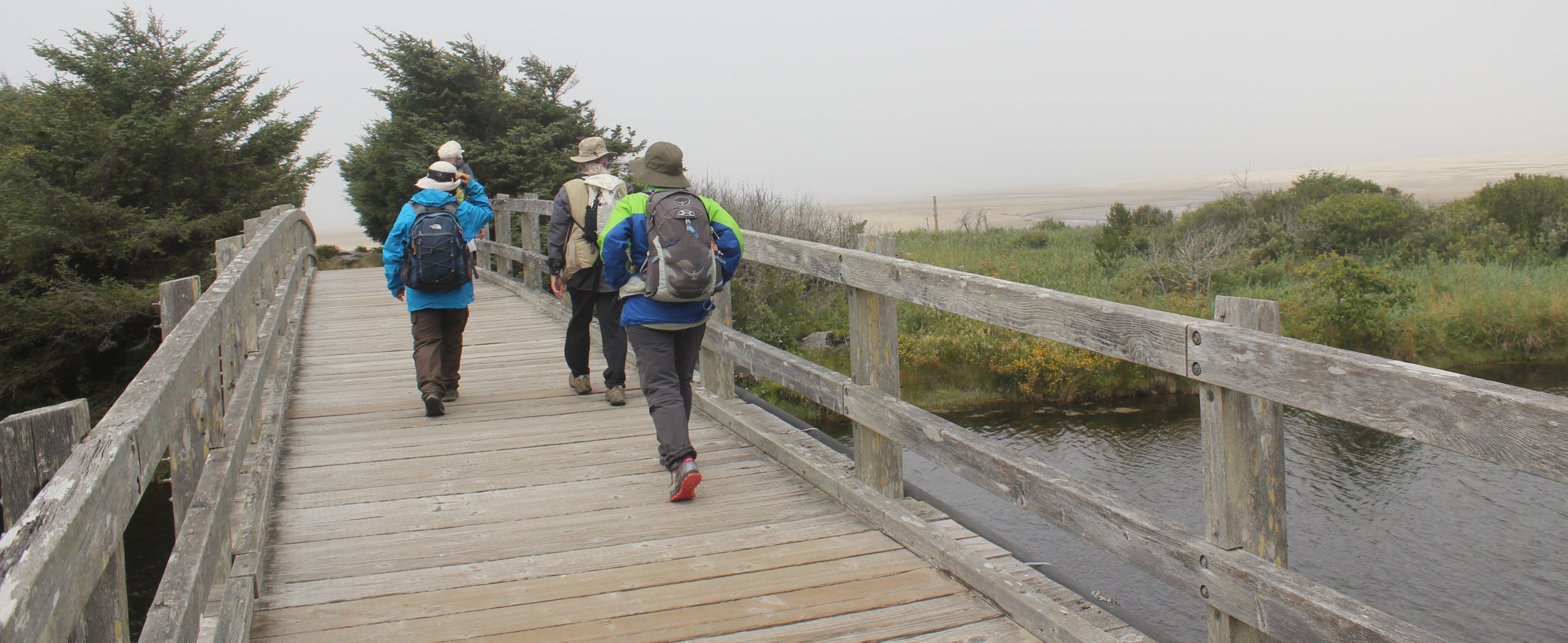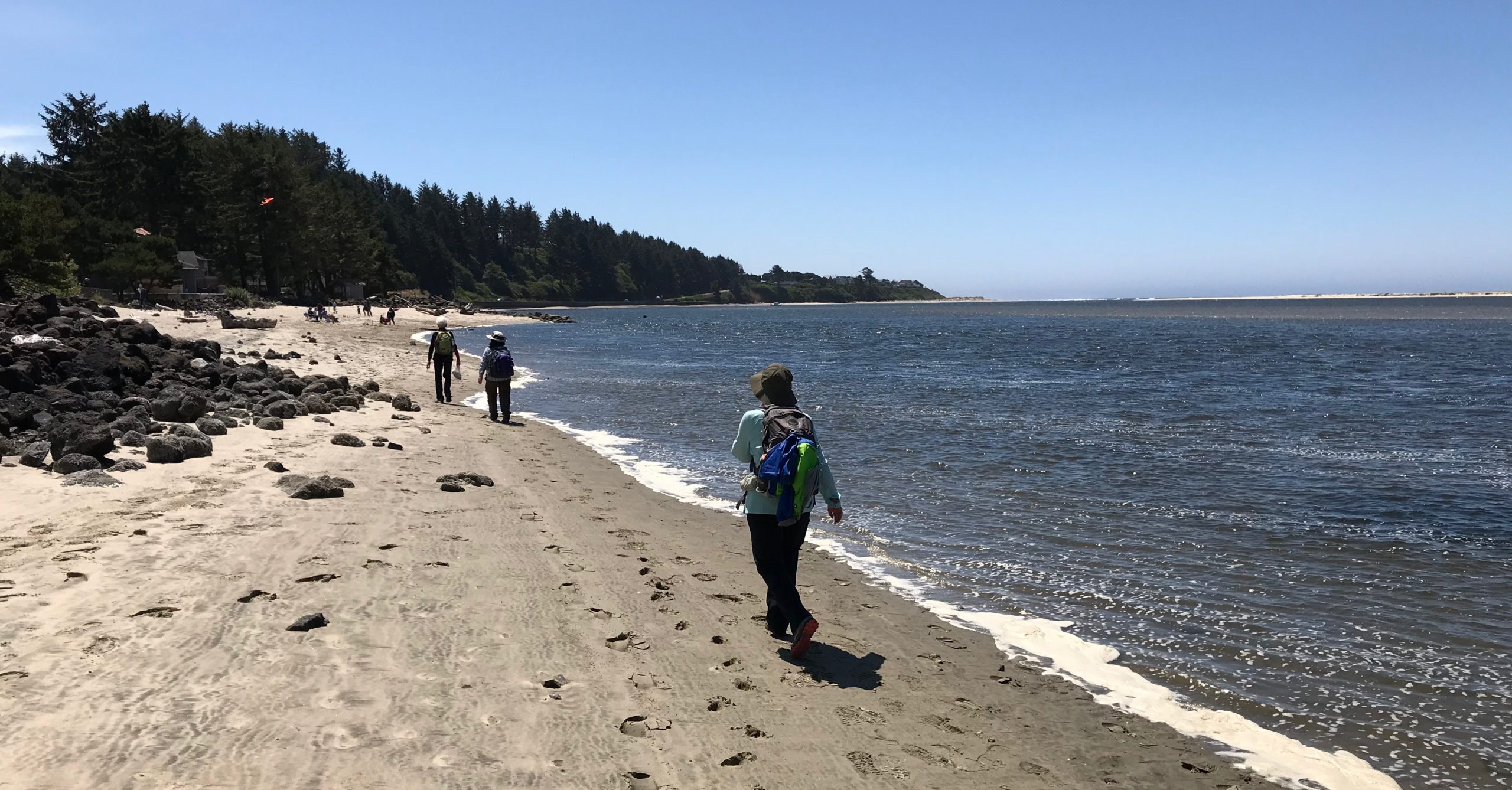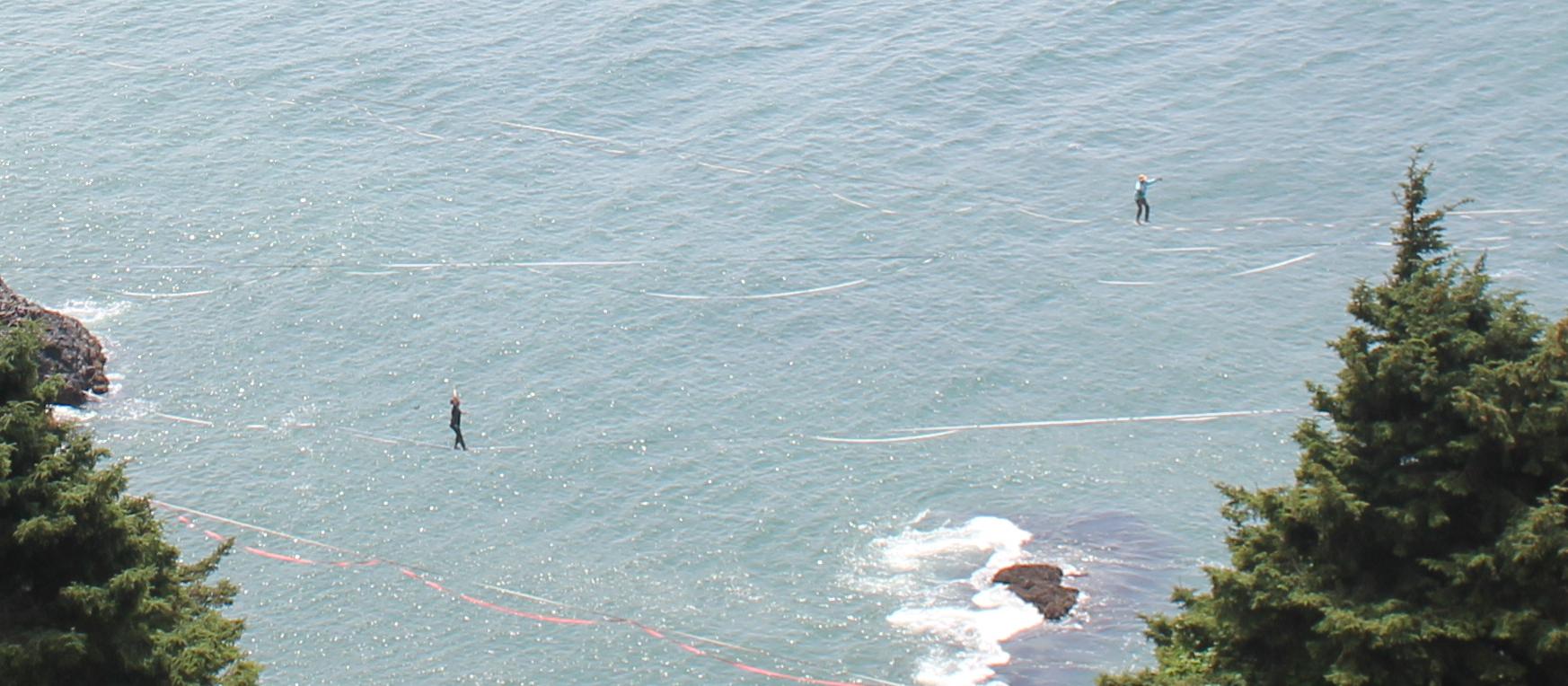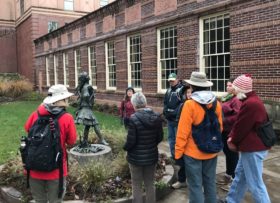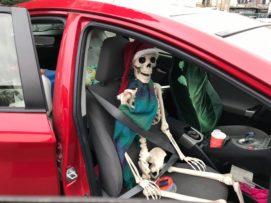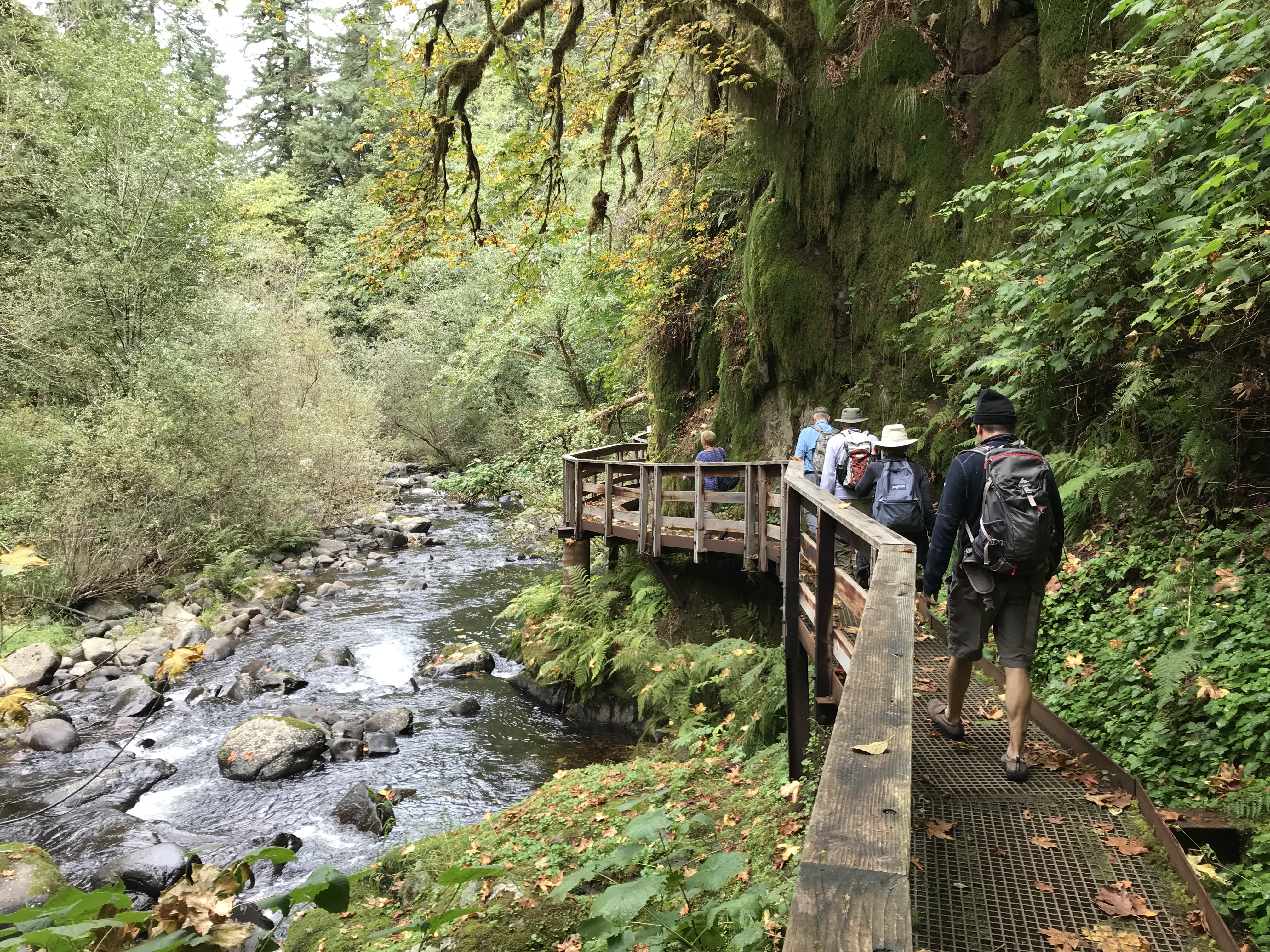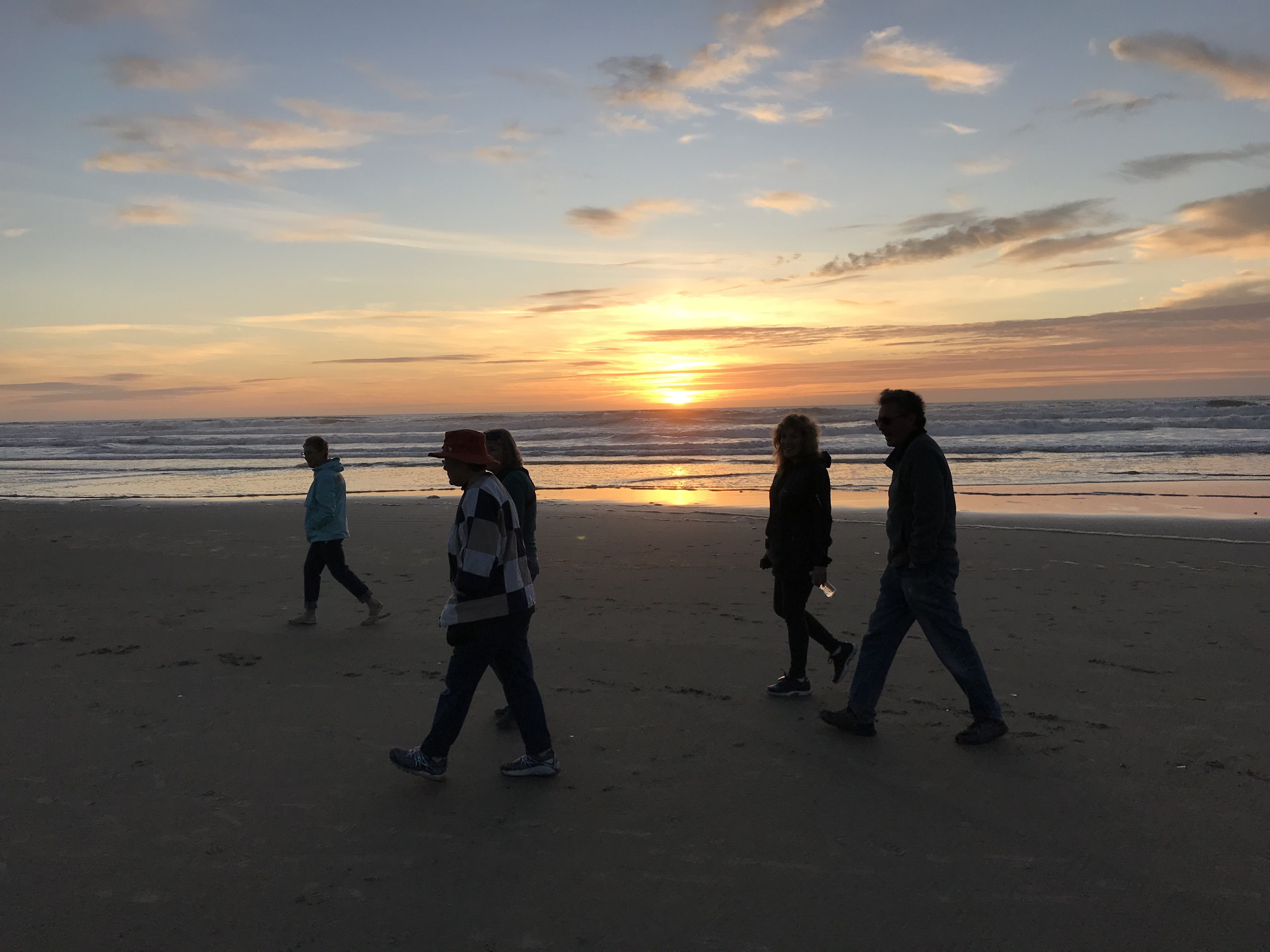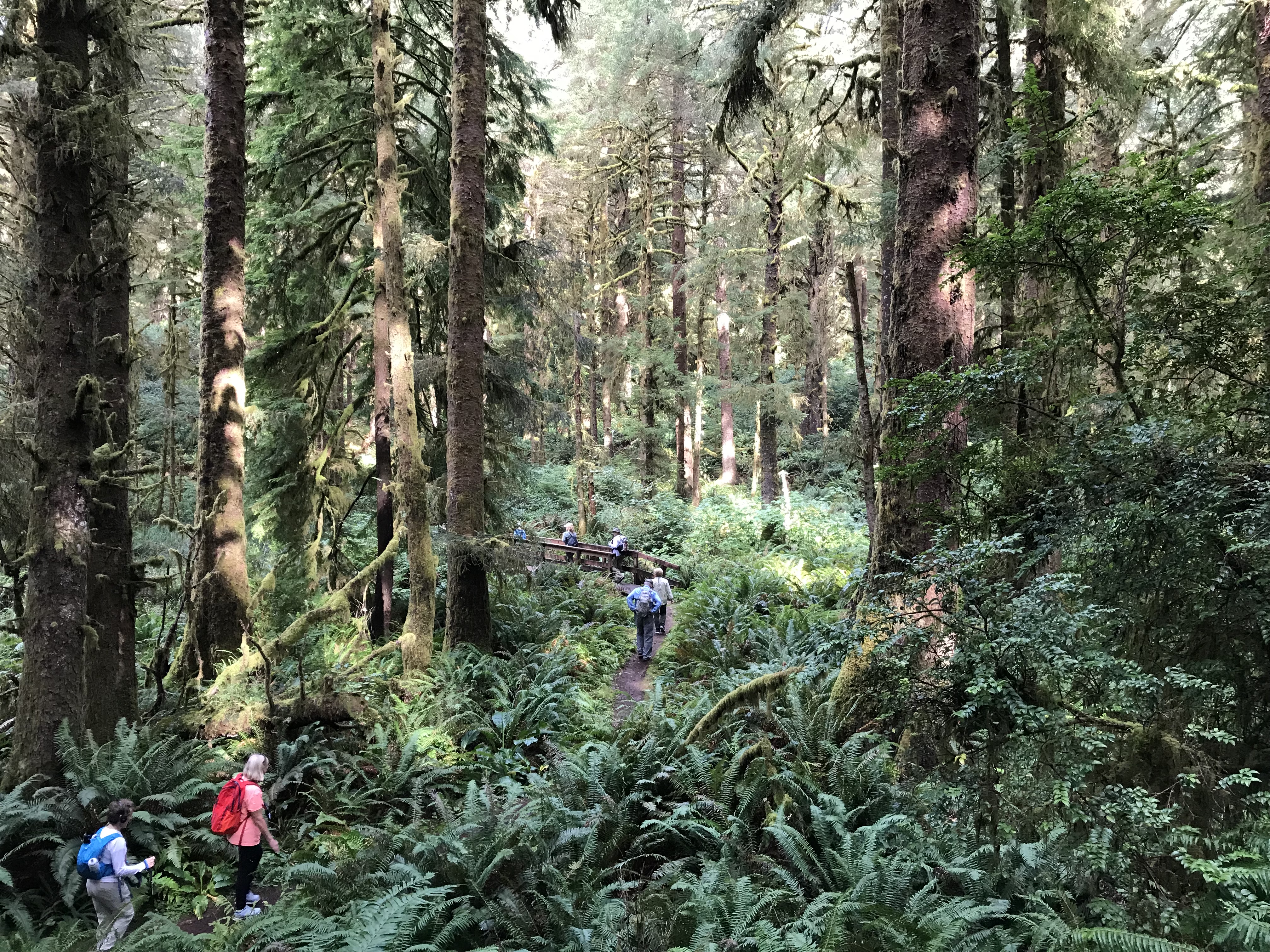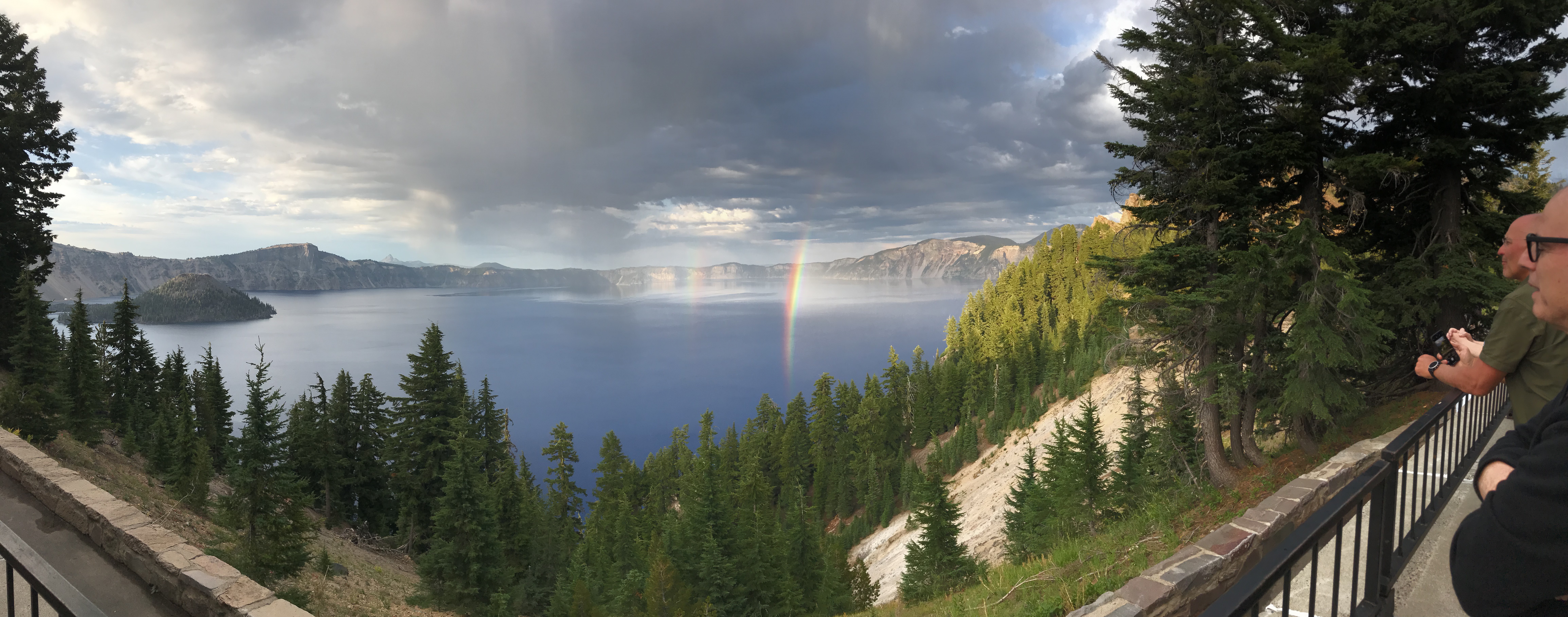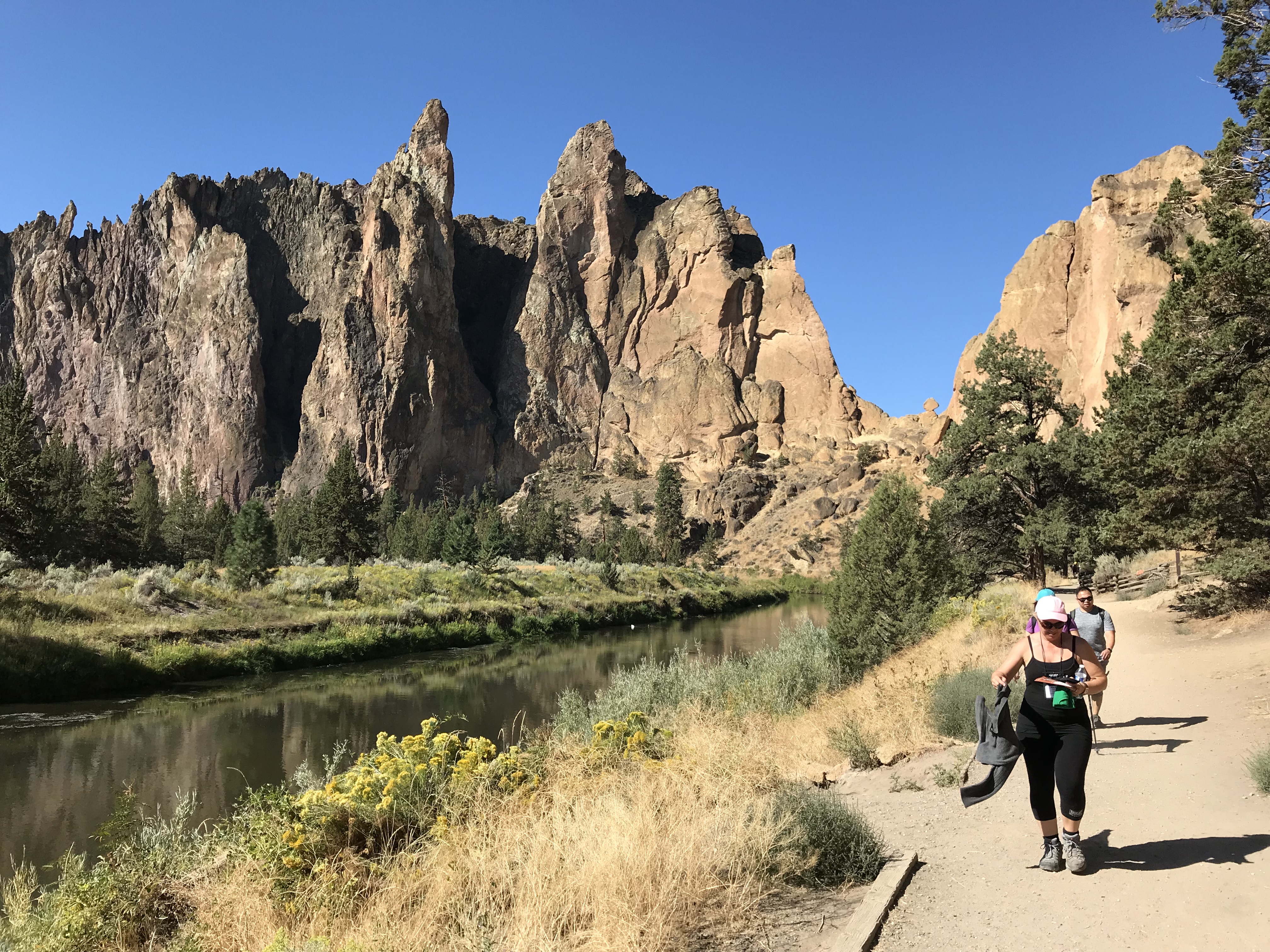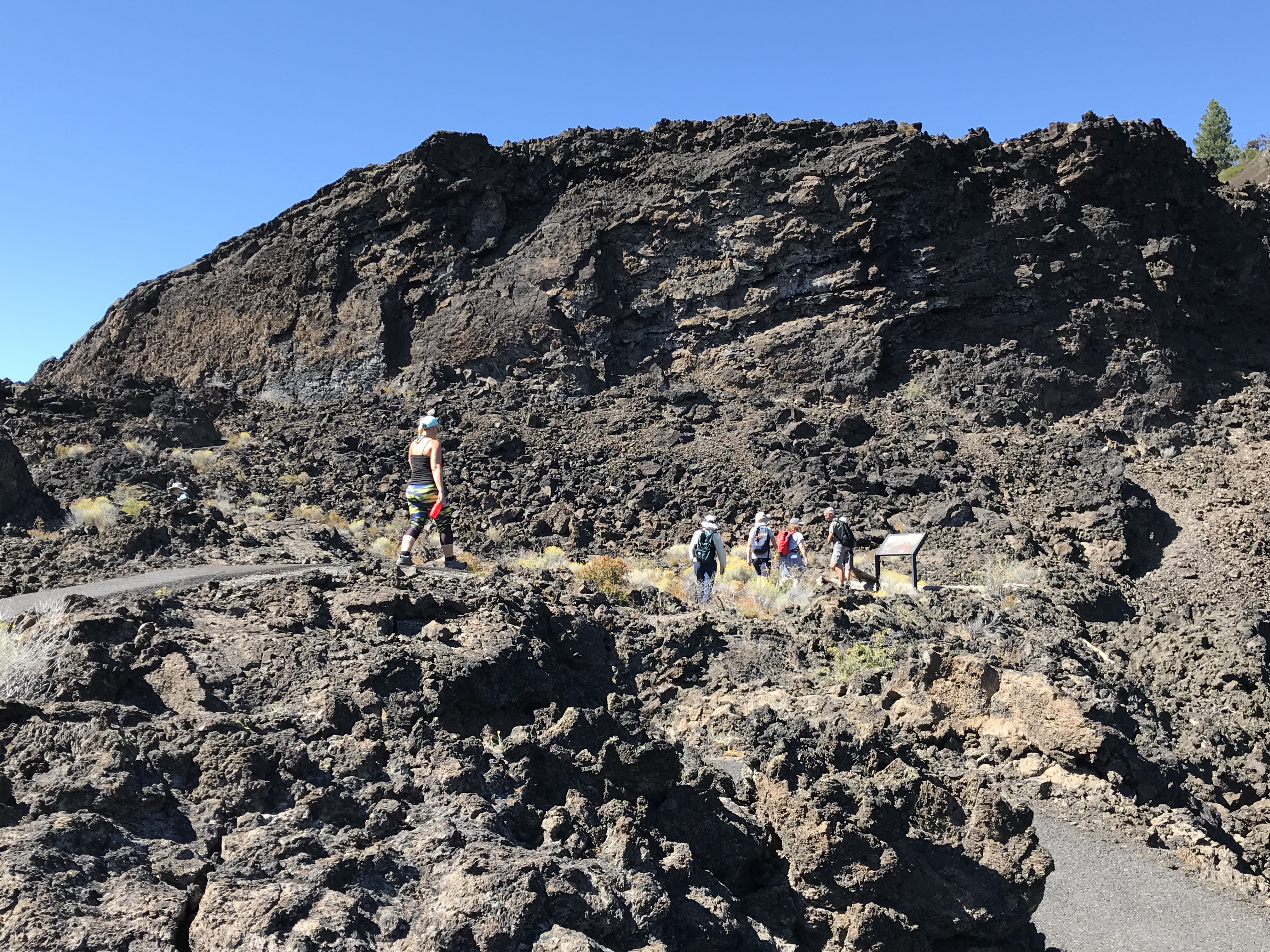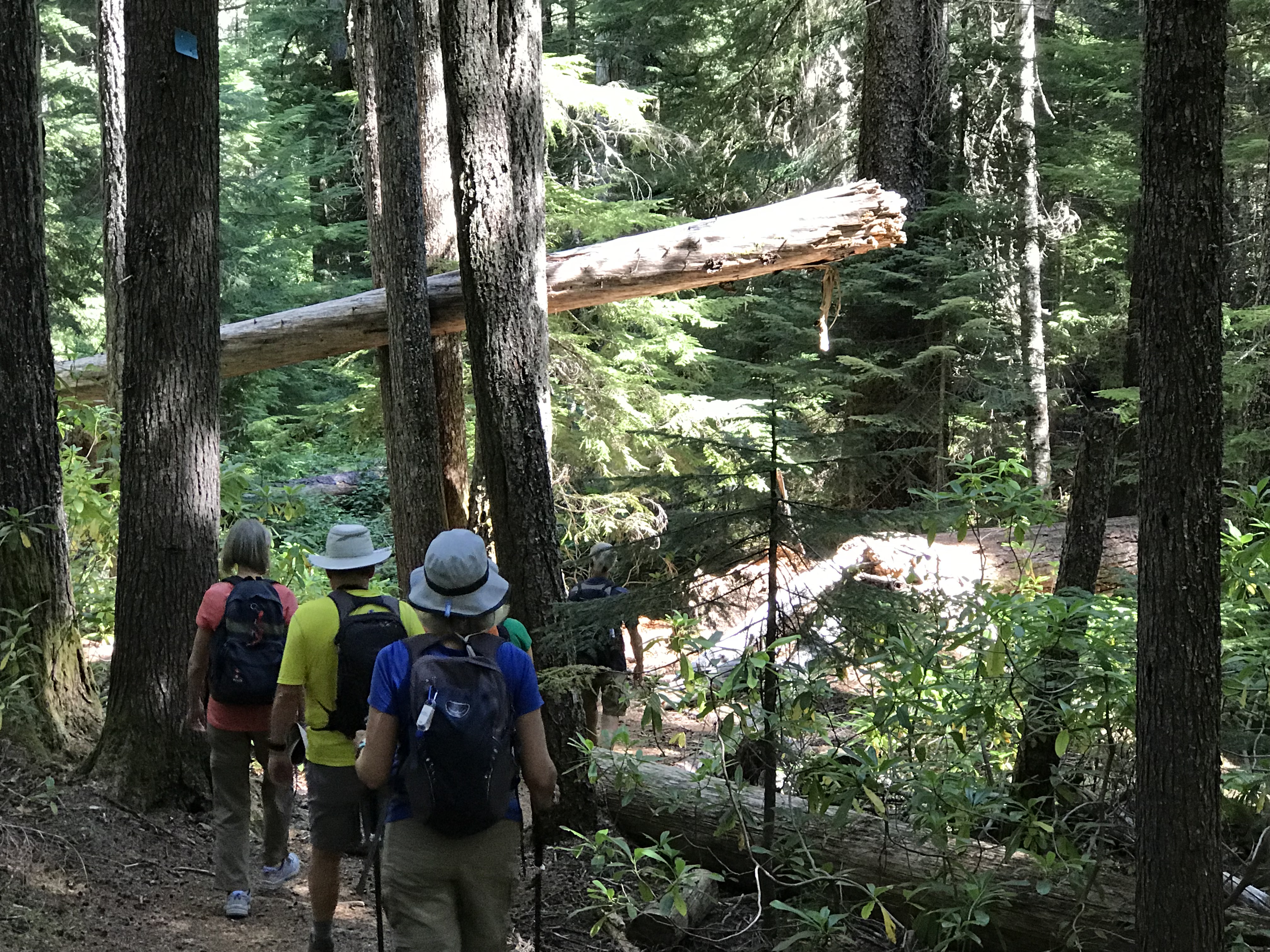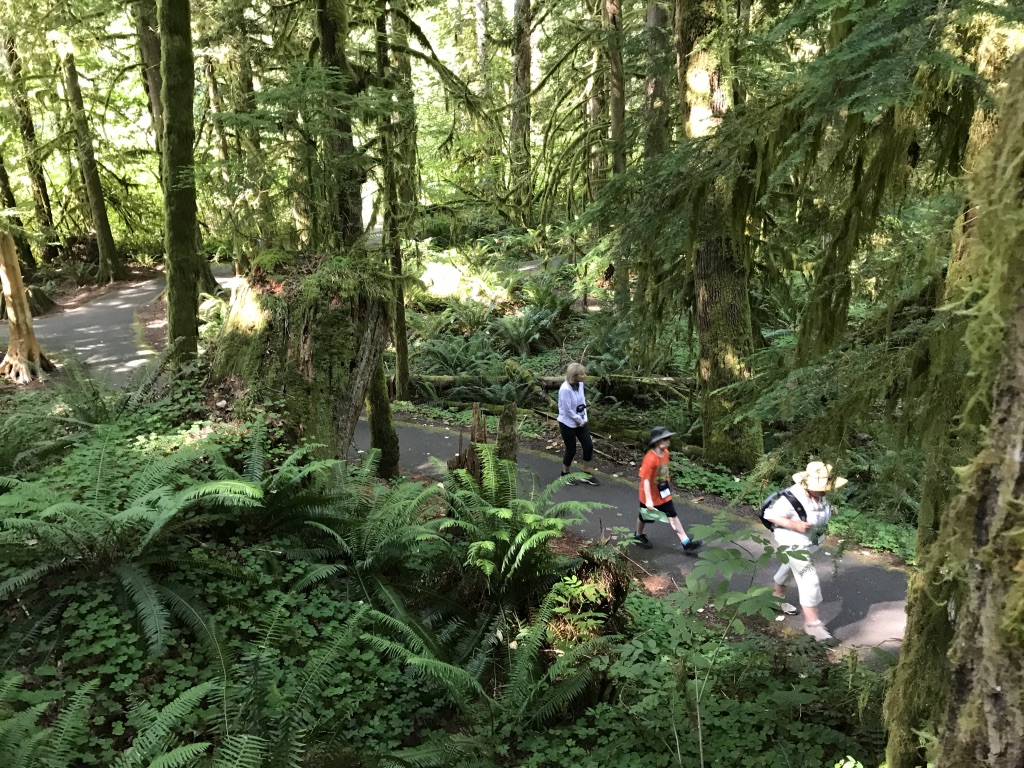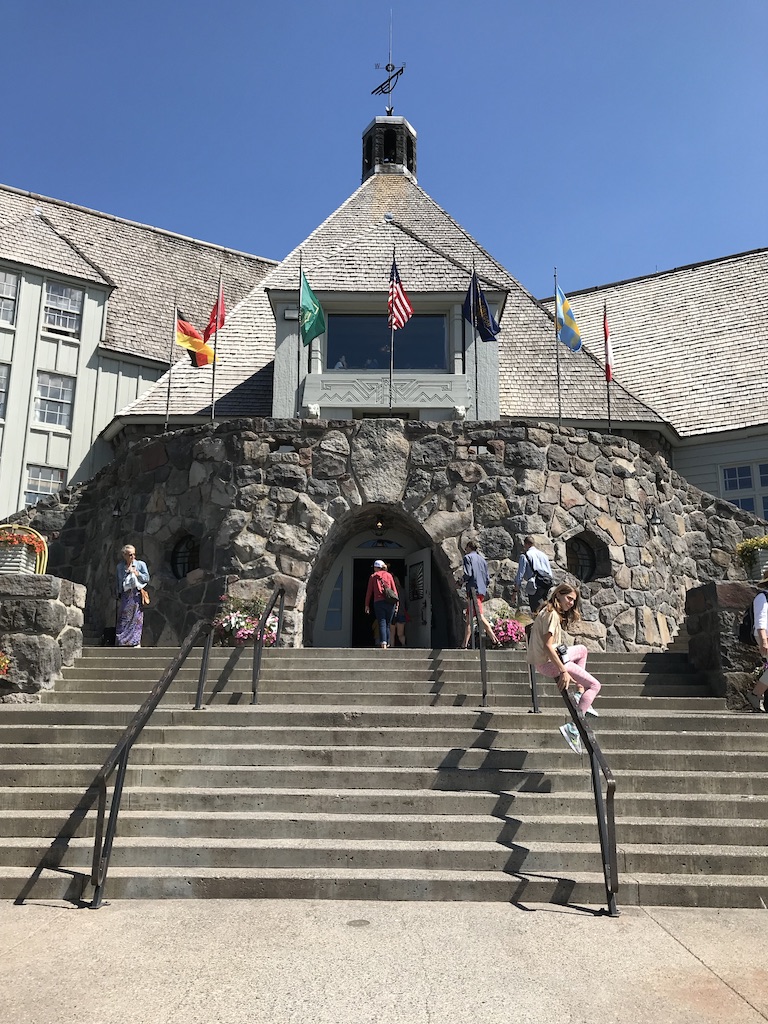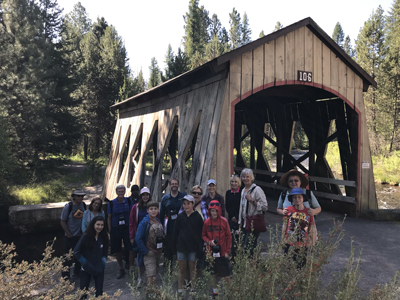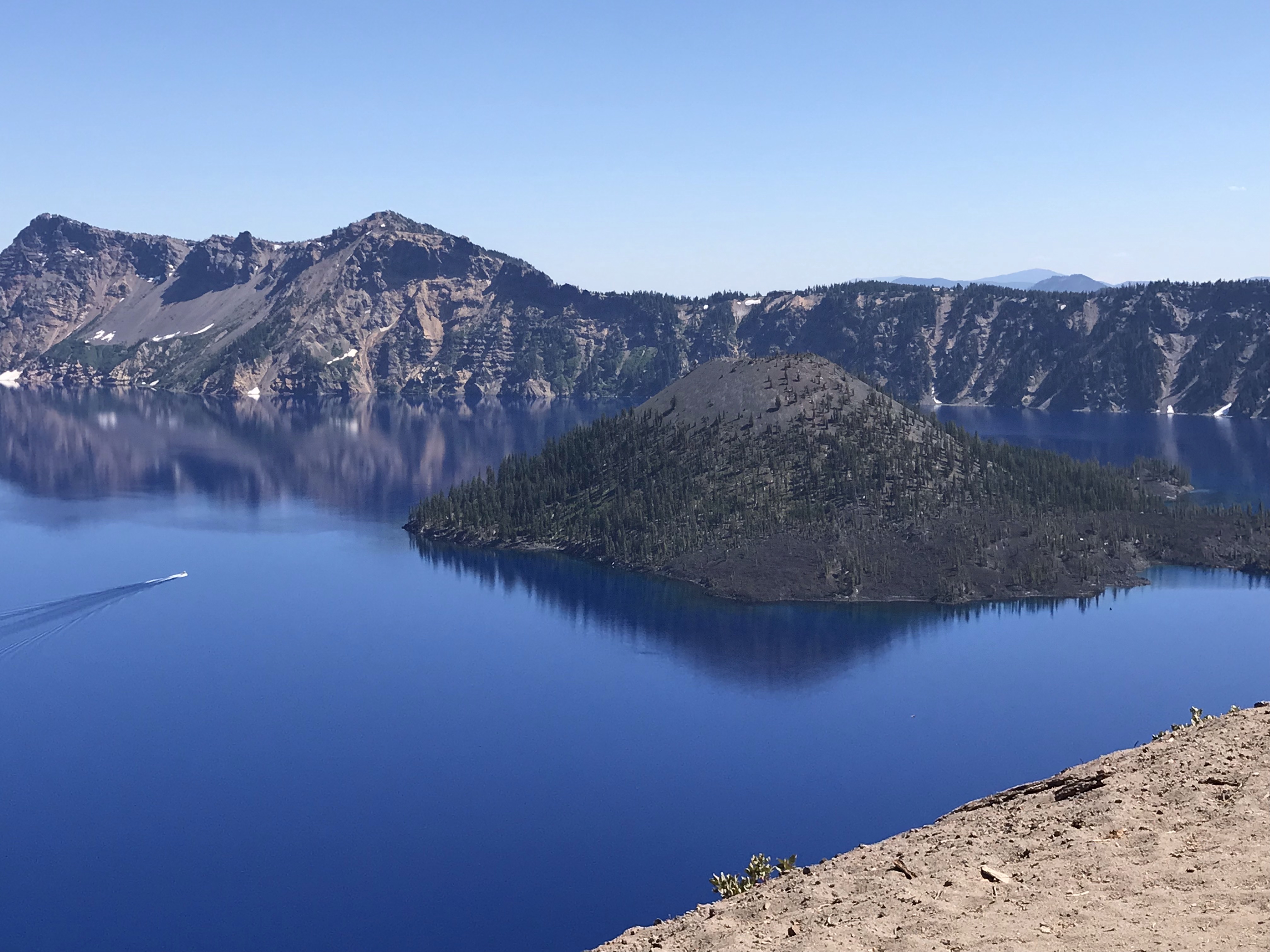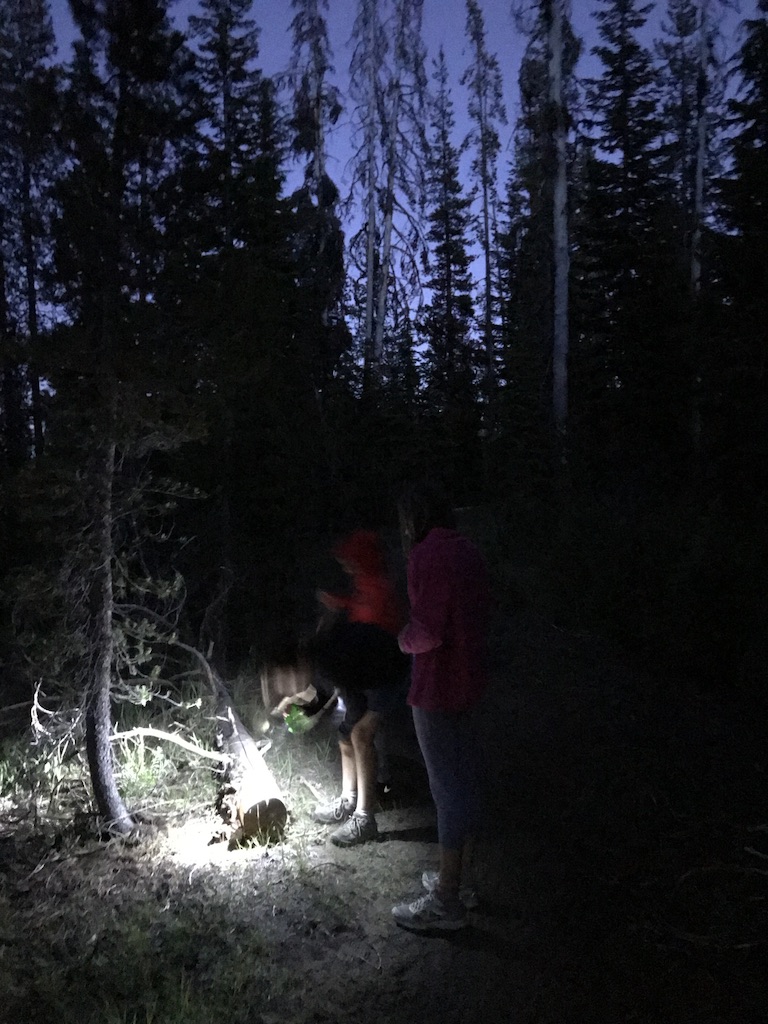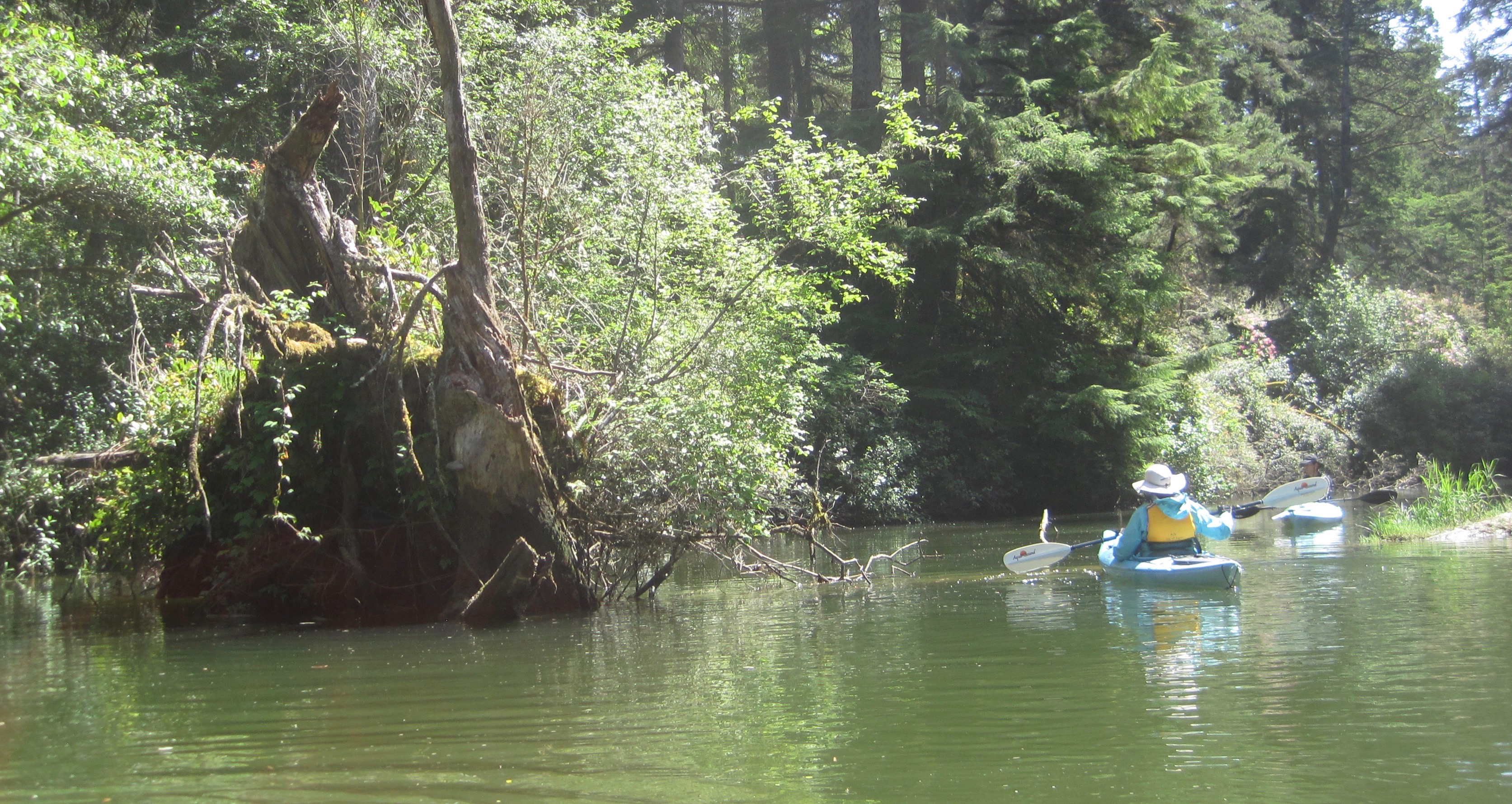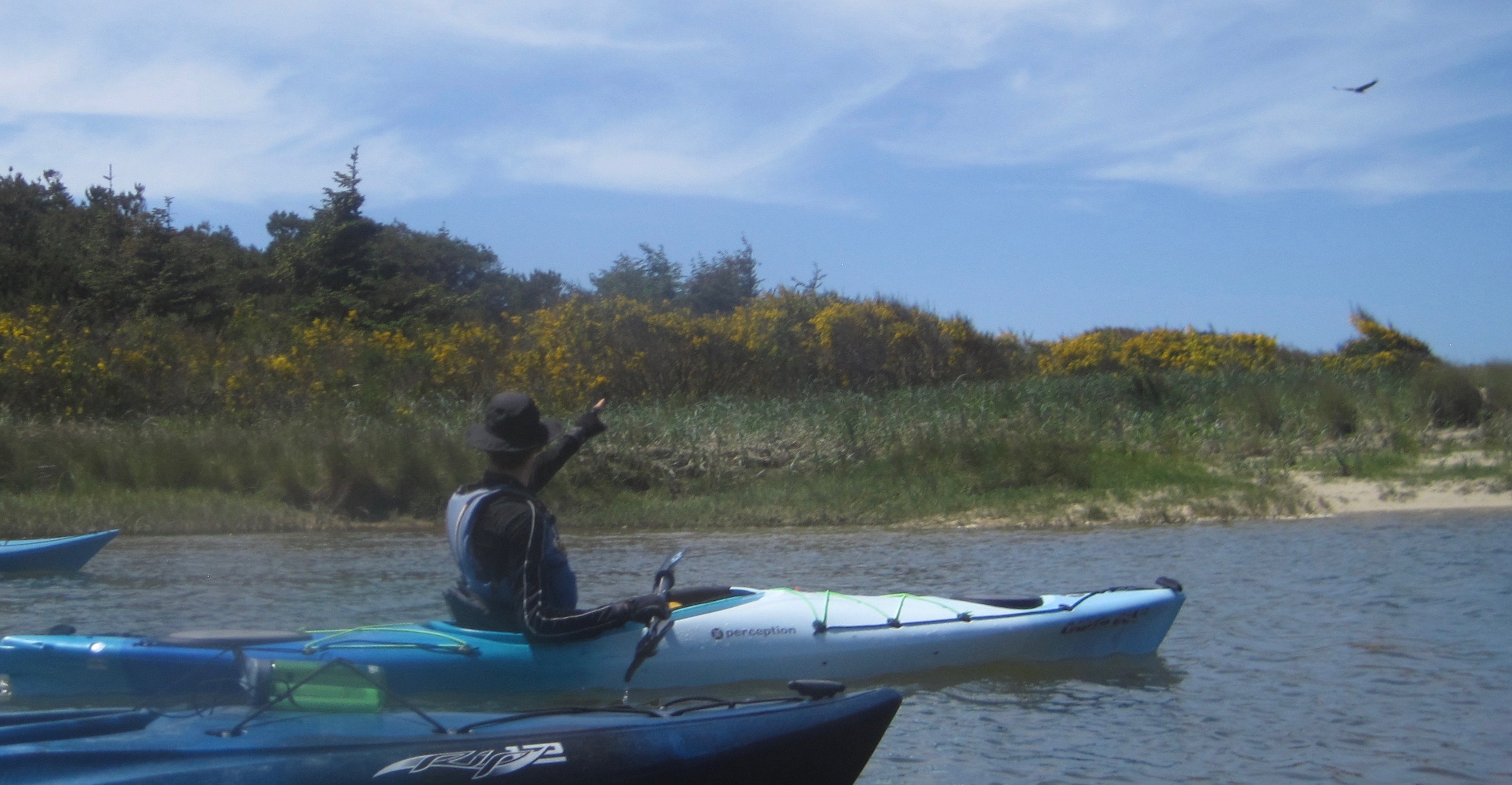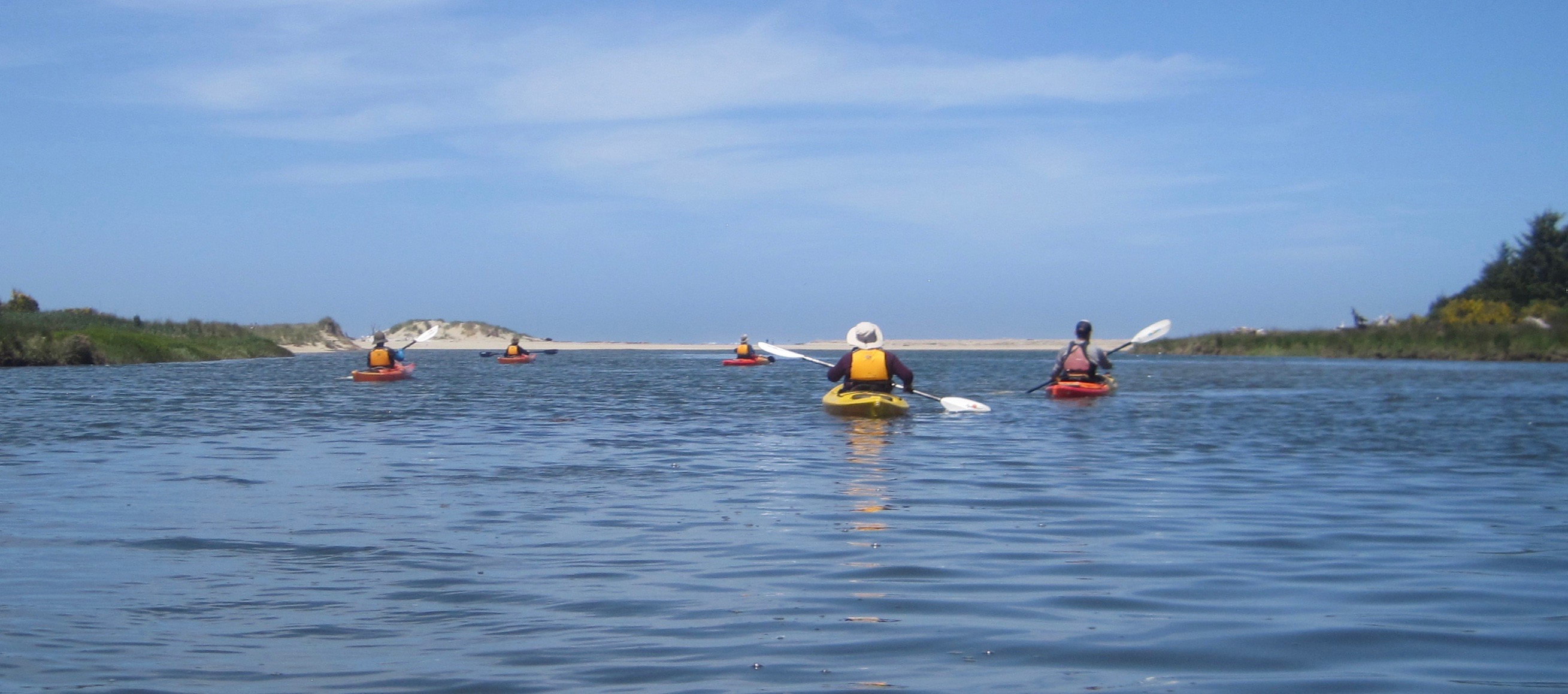Trip Report:
Trip Leader: Mark Hougardy | Organization: Eugene-based Hiking Club | Date: August 2021 | Duration: 3 days | Distance: 25 miles | Participants: 6 | Type: Hiking & Camping | Trip leader and participants were fully vaccinated against Covid; masking precautions were taken as needed.
The trip began at the Cape Perpetua main parking area at noon on Sunday. For logistical reasons, we switched the day 1 and 2 sections with each other. We arranged several shuttles to Yachats and walked through town, then on a side street, then a pathway next to the highway before venturing inland to the Amanda statue. After that, the trail had an unrelenting elevation gain. Finally, we reached the top at just over 1,000 feet and descended to 800 feet to the shelter at Cape Perpetua for amazing views of the Pacific Ocean and Oregon Coast. We walked down the switch-back laden trail, with some continuing to the group camp while others retrieved vehicles from the nearby visitor center parking area. The evening was quiet and we were able to enjoy a campfire in the cool ocean air.
The next day, we broke camp and arranged several shuttles between Yachats and the Governor Patterson Memorial State Recreation Site, about 7.5 miles away from where our hike began. The fog quickly returned. We passed the Big Stump, a relic of a “ghost forest.” The card attached to the tree says this is an ancient redwood tree that died about 1,200 years ago. The associated website for additional information is not active at the time of this writing. A second, seeming ancient redwood was found about a quarter-mile top the south on the beach. The group made several creek crossings. The wind kicked up. Entering Yachats, we walked on the 804 trail along the rocky coast and through Yachats to where our car shuttles waited at the Yachats State Park Recreation Area. The group split up, with those in town finding some lunch with several shuttled back to pick up our vehicles. Near the parking area, we watched several whales just off the coast. That afternoon, we returned to the group camp, where we relaxed and hiked local trails. BTW, on the interpretive display at Perpetua about the CCC camp from the 1930s, a Thanksgiving Day menu is shown. One of the items is “Goat’s Milk,” which is code for beer. That evening, a juvenile bard owl visited the camp. The owl sat on a prominent dead, broken tree about forty feet away for about 45-minutes. The owl looked at us and was very curious about some rustling in the nearby grass. The owl departed, and we enjoyed the evening.
On the third day, we broke camp and drove south by-passing several hard-to-access beaches or areas with a hazardous shoulder for walked to the Heceta Head parking overflow lot. We arranged a shuttle to the Muriel O. Ponsler Memorial State Scenic Viewpoint. We walked south to the Heceta Head, where we observed an osprey and briefly two bald eagles. We traversed the hobbit trail and over to Heceta Head Lighthouse. Just beyond the lighthouse, there were two possibly three juvenile gray whales playing and having lunch. We continued under the Cape Creek Bridge to the picnic area, where we ended the trip. Over three days, we hiked 25 miles and saw some fantastic wildlife.









